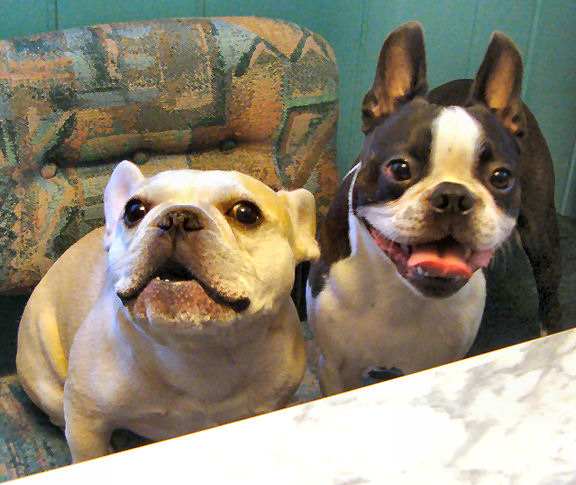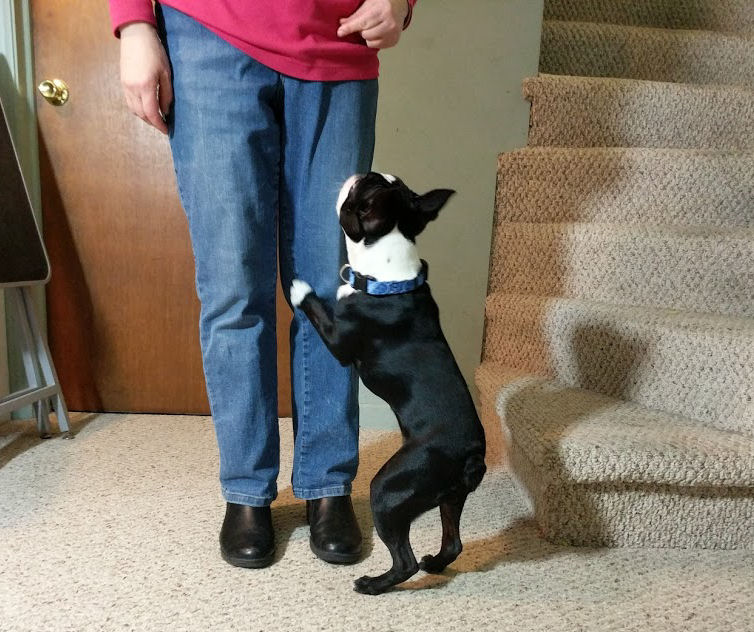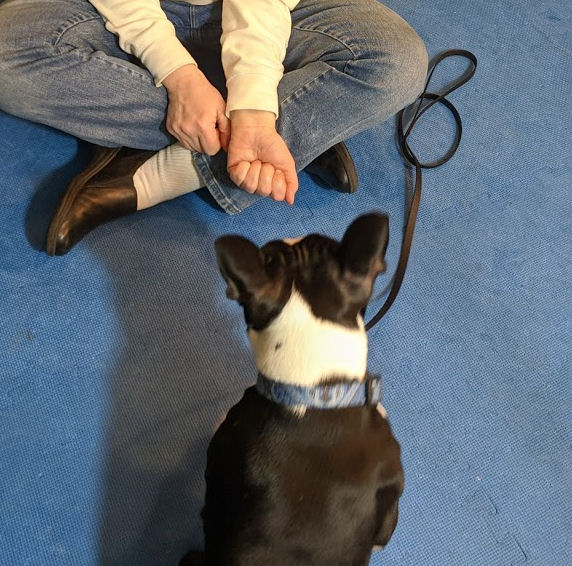Dogs, just like people, tend to get caught in patterns of behavior. What is your dog’s feedback loop?
For many dogs it starts with frustration when they don’t know what they’re supposed to do. And the behavior manifests as barking. Pretty soon, unless you have a way of breaking the loop, whenever your dog is frustrated he/she will resort to barking.
Untying your dog’s feedback loop

The saying “if you always do what you’ve always done, you’ll always get what you always got.” Absolutely true. If you always say “Quiet!” (loudly) when your dog starts barking, it’s become his/her cue to bark. You’re fueling the loop, rather than interrupting it. (We talked about this before, in our post, “Yes, Your Dog is Your Baby.”)
To turn the barking into an actual trick, with your dog able to perform on command, stop and play the barking game. Click and say “Good Bark!.” Chances are, if you’ve always tried to stifle the behavior, your dog will be startled by the click and try to figure out what he was doing that was rewarded.
If your dog barks again, either click and reward to reinforce it as a new trick, or turn your back and walk away. When your dog follows you quietly, click and say “Good Quiet!”And if he barks, click and say “Good Bark!”
Of course you can use whatever words you want instead of “Quiet” and “Bark.” Just remember to be consistent.
Alternative to the loop
If you just want your dog to be quiet, there are other ways to interrupt. Reel her in and, if your dog is small enough, pick her up and give her a hug. If you have a big dog, drop down on your knees and hug her.
Do something unexpected, so your dog is paying attention to you, rather than being caught in the established routine. If your dog knows a palm touch, switch into that game. If the dog is being truly incorrigible, put down all the training gear; clicker, treats, leash, etc. and just leave the vicinity. That’s it. You’re done.
Breaking the bargain
Remember that dog training games are the bargain we make with our dogs. They get what they want when we get what we want. If they’re not interested in keeping up their side of the bargain – we don’t have to play. A little cold-shoulder can result in a remarkable change in attitude.
Refusing to play with you is disrespectful and rude. One of the results of playing dog-training games is improved manners and confidence in your dog. It’s up to you to reject the lack of respect your dog is showing when he/she ignores you. Denying your dog your attention and “face time” usually works to remind them of your partnership. You are the senior partner. You decide the game.
Other loops
One of the most common “feedback loops” in dog training happens when agility dogs are learning or practicing the weave pole obstacle. It’s a series of 12 poles in a straight line and, as named, the dog’s job is to weave in and out between the poles. There’s a right way to do that.
Many dogs, both learners and veterans, occasionally get caught doing it wrong. And are seemingly unable to break out of the pattern.
The only way to get the dog’s head back in the game is to stop. Take a break. Refocus. Try again, either in a few minutes or at another time altogether. We all have days when our focus is off.
If your dog is just experiencing a lack of focus, don’t worry about it. Just break it off, do something else. Try again later. This isn’t an entrenched loop, but a momentary lapse.
Upward curve
Dog training doesn’t go in a straight, upward line. There are ups and downs, good days and not-so-good. The general trend should be towards your goal, whatever that may be. If you find yours going in loops, it’s time for a change.



